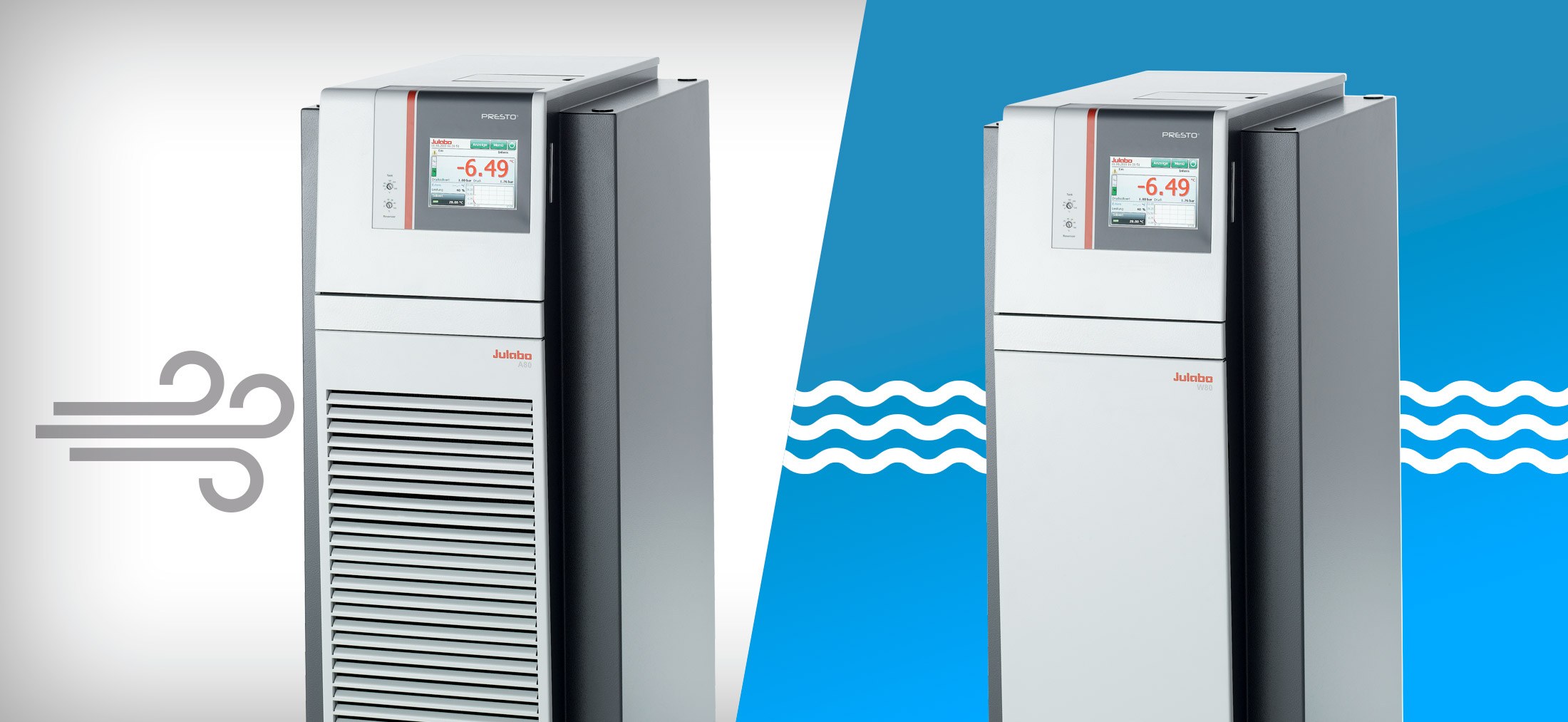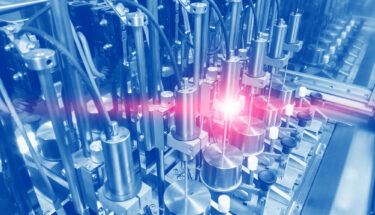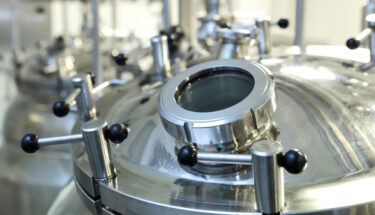
Air-cooled vs. Water-cooled Temperature Control Units – What’s the Difference and Why Does it Matter?
Temperature control units (TCUs) with refrigerators systems are either air-cooled or water-cooled. Industrial chillers, refrigerated circulators, recirculating chillers, and highly dynamic temperature control systems, such as our PRESTO series, are all examples of liquid temperature control units that can be either air-cooled or water-cooled.
What’s the difference between an air-cooled TCU and a water-cooled TCU? And how do you choose the right system for your lab or facility? We’ll look at the fundamental differences in how these two systems operate and cover some things to keep in mind when choosing a refrigeration temperature control system.
Refrigeration systems consist of a closed-loop circuit filled with refrigerant gas and include a compressor, condenser, and evaporator. The refrigerant gas passes through a compressor, which increases the pressure. Doing so raises the refrigerant temperature considerably (think of touching a manual air pump after filling a bike tire with air – it’s hot!). To remove the heat, the compressed refrigerant passes through a condenser to lower the temperature, which creates a refrigerant phase-change from gas to liquid. The systems can accomplish this cooling either with air or water.
An air-cooled condenser has a high surface area to radiate the compressed refrigerant’s heat. The hot refrigerant cools while traveling through the condenser as air flows across it driven by a fan. (Think of it this way – your automobile uses a similar concept to remove/control engine heat by flowing coolant through the radiator.) The heat removed exits out the back of the TCU.
This heat equals the maximum amount of rated cooling power provided by the TCU plus additional heat from motors, etc. The larger the cooling power of a TCU, the larger the condenser.
The excess heat removed by the condenser is called heat rejection. From a facility perspective, how that heat rejection affects applications depends, in part, on the HVAC capability at the TCU location. If the HVAC system cannot keep up with the heat rejected by the TCU, the room will heat up, eventually degrading the TCU performance. To circumvent ambient heat rejection, refrigeration systems can employ water-cooled condensers. Here water removes the heat-waste generated by the compressor via a plate or tube-in-shell heat exchanger. This eliminates heat rejection into the facility (no HVAC issues), reduces airflow significantly (which is particularly crucial for cleanroom applications), and reduces noise (no fan) from the TCU. Larger capacity TCUs also have a smaller footprint when equipped with a water-cooled condenser.
How to decide between air- or water-cooled?
TCUs can have air-cooled and water-cooled versions of the same model. As a rule of thumb, the heat rejected by an air-cooled unit equals 1.4 times the maximum cooling power. It’s a good idea to share this value with facilities management to check the HVAC capabilities at the installation location. In cases of medium refrigeration capacity systems, the perceived need for a water-cooled TCU might prove unnecessary by testing an air-cooled version. If validation of the air-cooled TCU proves acceptable, then installation proves rather simple.
The decision between air- or water-cooled TCUs becomes a balancing act. Air-cooled units require no facility water hook-up but add heat to the location. Water-cooled units eliminate excess heat, additional airflow, and have a smaller footprint but require a facility water supply. Ultimately the best course remains to consult with the TCU supplier to address all aspects of the application and facility requirements/limitations. The team at JULABO USA can help you determine whether a water-cooled or air-cooled unit is best for your lab or facility.
Tip: In the JULABO portfolio, water-cooled TCUs always have a ‘W’ in the product name.
JULABO USA has a variety of both water-cooled and air-cooled options for consideration. If you see an “A” in the product name, that means it’s air-cooled. Also, our water-cooled TCUs will always include “W” in the product name. Additionally, if there are visible vents on the TCU, it’s probably air-cooled.
Many industries, including pharma, aerospace, optics, electronics, automotive, biotech, biopharma, medical devices, semiconductor, and cannabis often rely on cleanrooms. If you are working in a cleanroom, you want to mitigate heat-rejection and consider water-cooled systems or highly dynamic temperature control systems like JULABO’s PRESTO, which do not add heat to the surrounding environment. JULABO USA has several refrigerated options for cleanrooms, including the PRESTO W80, FLW4003, and FPW55-SL.
The thing to remember is that one system isn’t better than the other; it depends on your lab or facility. Regardless of whether you choose water- or air-cooled systems, it’s important to check with facilities management, since the TCU will impact either HVAC capabilities or water consumption. For assistance choosing and sizing the right cooling system for your lab or facility, visit JULABO.us or contact an expert directly to start a conversation about your specific needs.






